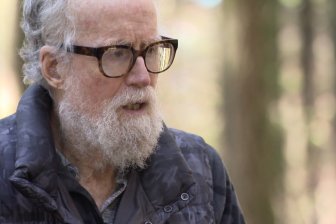Making a Murderer subject Steven Avery was framed — and not just by the Wisconsin police, claims ex-FBI cold-case expert John Cameron. He asserts that the 2005 murder of 25-year-old photographer Teresa Halbach has all the earmarks of infamous serial killer Edward Wayne Edwards, and Netflix docuseries Making a Murderer got it wrong.

Avery, who’s trying to get a retrial and has filed multiple appeals against his murder conviction, recently secured a new lawyer, Kathleen Zellner. Zellner, too, has been trying to amass as much evidence as possible to help her client go free. Over 400,000 people have signed online petitions to see Avery freed or pardoned.
In a note to his supporters, Avery wrote “I am innocent.”
In an interview with Cameron conducted by Radar Online, Cameron agrees with Avery, believing he was framed by serial killer Edwards.
READ MORE: Steven Avery’s new lawyer pokes holes in prosecution’s case on Twitter
“Steven Avery is completely innocent,” said Cameron. “He was set up by Edwards.”
Cameron brings up several bits of evidence, and even though it’s mostly circumstantial, it’s an interesting new theory that neither the police or Making a Murderer touched upon. For one, Edwards lived one hour away from Avery’s Wisconsin property in 2005, where the alleged murder of Halbach took place.
The murder, which ended with Halbach’s charred, nearly unrecognizable remains in a fire pit on Avery’s property, mirrors one of Edwards’ killings.
READ MORE: Juror involved in Making a Murderer homicide case stands by the verdict
Edwards was convicted of five murders and sentenced to death in March 2011, but he died of natural causes on death row just weeks later. He is suspected of many more murders, and he hinted on several occasions that he had other victims that the police never discovered.
In another potential coincidence, Cameron says a figure appears behind Wisconsin prosecutor Ken Kratz in Episode 6 of Making a Murderer — and it’s Edwards.
“It looks like Edwards to me,” said Cameron, who added that it was common for Edwards to show up at funerals and court hearings during high-profile murder cases. “He got off on that,” he added.
In perhaps the most shocking new evidence from the former cop, Cameron claims that an anonymous note was sent to Wisconsin investigators working on Avery’s case, which is also something Edwards was known to do.
READ MORE: More than 400K sign petitions calling for the pardon of Making a Murderersubjects
Ultimately, the letter was disregarded by the court.
Cameron has reached out to Kratz and Manitowoc County investigators to get them to consider this theory, but as of this writing, he hasn’t received any response.
Netflix’s Making a Murderer is a 10-part documentary series that follows the case of 53-year-old Wisconsin native Avery. He is serving a life sentence (without the possibility for parole) for the murder of Halbach and illegally possessing a firearm. Avery, who had previously been jailed for 18 years for a sexual assault in 1985, was exonerated in that case by newly discovered DNA evidence in 2003.
Two years later, Avery brought a US$36-million lawsuit against Manitowoc County, Wis., for the wrongful conviction. Making a Murderer calls into question the investigation and trial that put Avery and his nephew, Brendan Dassey, behind bars, and alleges that the investigators and police in the case planted evidence and otherwise manipulated the outcome of the trial.




Comments